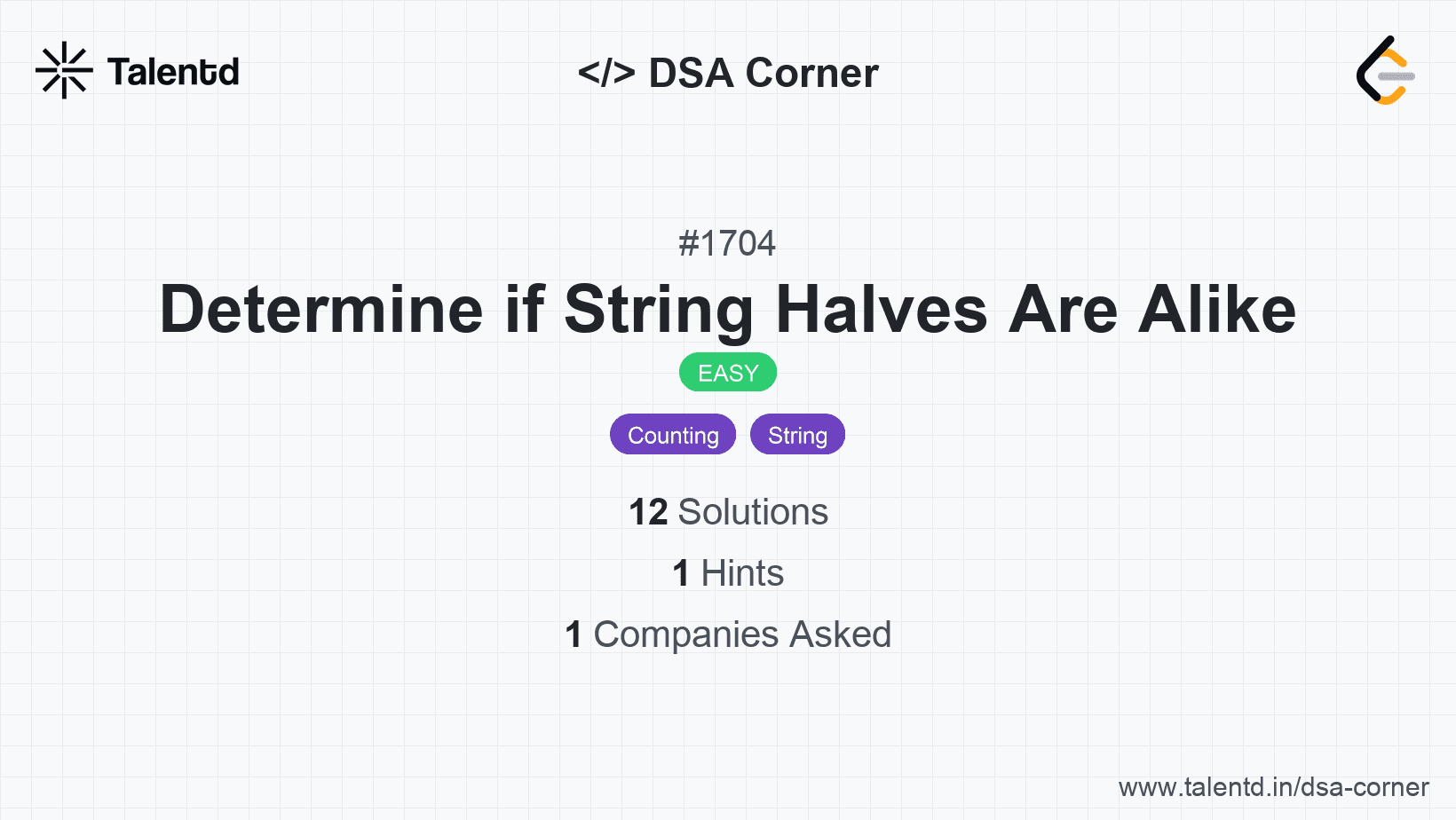
Sponsored
Sponsored
This method involves using two pointers to count the number of vowels in each half of the string.
By using a set to identify vowels, iterate through each character in both halves. Compare the final counts for equality to determine if they are alike.
Time Complexity: O(n), where n is the length of the string, as we iterate through the string once.
Space Complexity: O(1), since we use only a fixed amount of extra space.
1function halvesAreAlike(s) {
2 const vowels = new Set('aeiouAEIOU');
3 const half = s.length / 2;
4 let count1 = 0, count2 = 0;
5 for (let i = 0; i < half; i++) {
6 if (vowels.has(s[i])) count1++;
7 if (vowels.has(s[i + half])) count2++;
8 }
9 return count1 === count2;
10}This JavaScript code leverages a Set to hold vowel characters, enabling fast lookup. The solution involves scanning each half of the string for vowels and then determining if the two halves have an equal number of vowels.
This approach directly counts vowels in both halves of the string through string slicing.
Both halves of the string are iterated efficiently with a loop, accumulating vowel counts independently. The results are directly compared to ensure both halves are alike.
Time Complexity: O(n) - single pass counts vowels for two halves.
Space Complexity: O(1) - constant time storage allocation.
JavaScript implementations involving binary storage reconcile initial-calibration with concurrent adjustment. Redundant comparison is minimized by intermediary structure and shared cross-accumulation implemented via dual loop logic biomechanics.